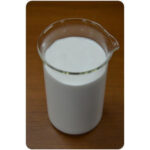
Pigment Printing Binder you Need to know About
Printing technology has long been the backbone of textile wet processes. A pigment printing binder is made up of pigment, an acrylic binder, a thickening, and a polymerize catalyst.
Acrylic binders are polymeric coatings that maintain both the color and the textile substrate on one hand.
Good adhesion, resistance to chemical/mechanical stresses, good fastness characteristics, and flexibility are just a few of the qualities that a perfect Pigment should have.
Acrylic polymer emulsions have a lengthy track record of success in the marketplace.
The flexibility of these materials, as well as their wide range of compositions and qualities, as well as their inherent stability, durability, and pigment binding capabilities, are all contributing to their growing popularity.
Binder in Textile printing ?
The pigment method often uses a binder made of styrene-butadiene, styrene acrylate, or vinyl acetate-acrylate co-polymer. Binders are the mechanisms that hold the colour on the cloth while printing textiles using Pigment printing binder
Coloration, which includes dyeing and printing procedures, is a value-added treatment for most textile materials.
Dyeing is the application of colour to the entire substrate. Printing is a partial colouring on materials to produce an appealing pattern from the standpoint of colours.
Colour may be add by , dyein or printing in an aqueous solution, or pigment, which could be apples with a print paste. Pigment printing binder is not only the oldest but also the most simplest printing process in terms of application.
Pigment printing binder accounts for more than 80% of printed items because to its apparent benefits, including flexibility, ease of near-final print during the printing stage itself, applicability to nearly any type of fibre or combination, and the ability to avoid any washing operations after fixing.
In Pigment printing binder insoluble pigments with no affinity for the fiber are applie to the cloth with binding agents to create the desire design.
This is likely an oversimplification, but it clearly distinguishes pigments from dyes that are absord into the fiber and fixed there as a result of dye-specific processes.
The fundamental component of printing is printing paste, which allows for the creation of predetermined patterns.
Pigments, emulsifiers, binders, softeners, thickeners, antifoaming agents, and crosslinking agents are commonly found in Pigment printing binder paste.
As a result, each of the printing paste ingredients must be give particular attention.
Why we use binders in pigment printing ?
The chemistry of binders and how they work in pigment printing on cellulosic textile substrates are discuss in this review article. Textile printing is most accurately define as an industrial art form with a rich history and bright future.
Textile printing is the most versatile and widely used process for adding colour and pattern to textile textiles. Binding agents or binders are used to adhere insoluble pigments to fibres that have no affinity for them.
Printing pastes impart colours or pigment to textile fabric in textile printing. Binders are the mechanisms that hold the colour on the cloth while printing textiles using pigments.
The choice of Pigment printing binder will always be determine by the process’s final fastness needs as well as its cost constraints. Addition polymerization compounds make up nearly all of the binders used in textile pigment printing.
The binder is a film-forming material made up of long chain macromolecules that, when combined with the pigment, form a three-dimensional network on the cloth.
Various binders were also create for the purpose, eventually leading to the usage of water-in-oil and oil-in-water emulsions.
This increased the use of pigments in textile printing, and pigments have since become one of the most common coloring materials used in printing.
This article focuses on the importance and roles of binders in pigment printing, as well as the chemistry of binders and their role in pigment fixing on textile substrates.
Pigment printing binder Basic Principle:
Pre-treatments.
Printing.
Dyeing (90-100ºC).
Curing (Cotton 140-160ºC; 3-5min and polyester 160-220ºC; 30-60sec)
Advantages & Disadvantages.
Pigment printing binder offers several advantages and disadvantages. The advantages and disadvantages. are list below.
Advantages of Pigment printing binder
1) Both natural and synthetic fibers may be dyed with colour.
2) For the printer, pigment printing is a simple operation.
3) Pigment printing is the most cost-effective printing method.
4) pigment printing allows maximum output of goods.
5) fastness properties are good to average.
6) Pigment printing can create a well-defined design.
Disadvantages of Pigment printing binder.
1) Textiles with pigment prints are uncomfortable to wear.
2) During roller printing, pigments are susceptible to crushing.
3) The rubbing fastness is moderate.
4)Pigments are entirely dry-cleanable.
Print your T-shirt, Polo-shirt, or other textile materials with pigment to create a variety of appealing designs.
TO KNOW ABOUT CHEMICAL





